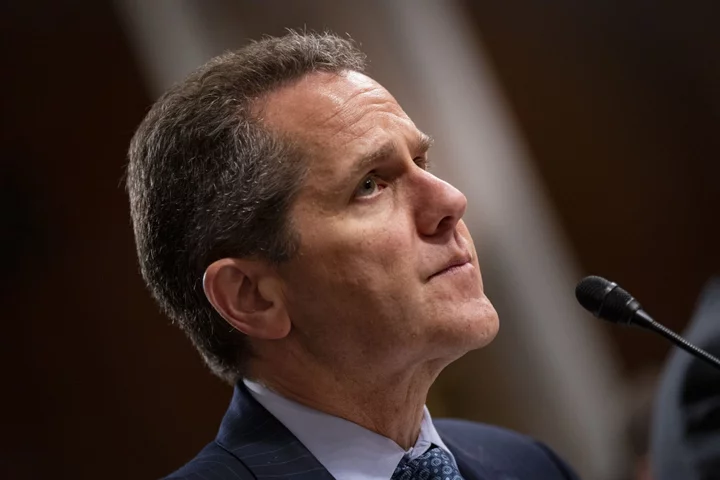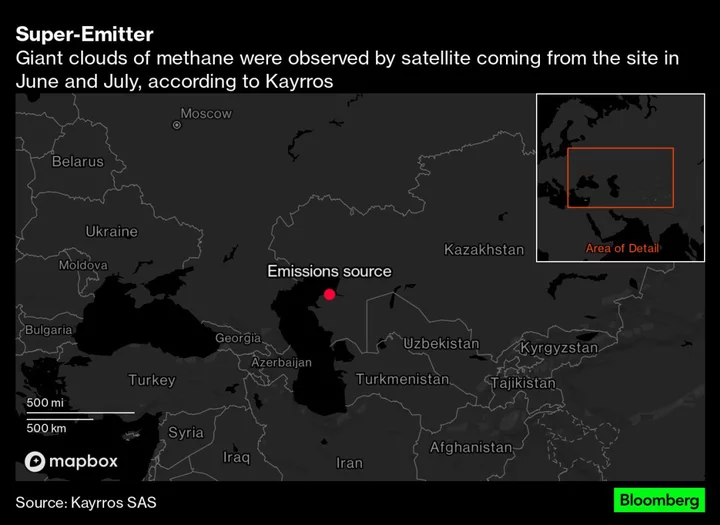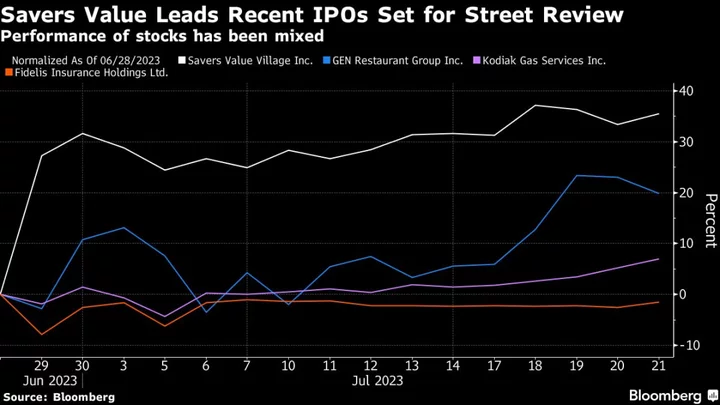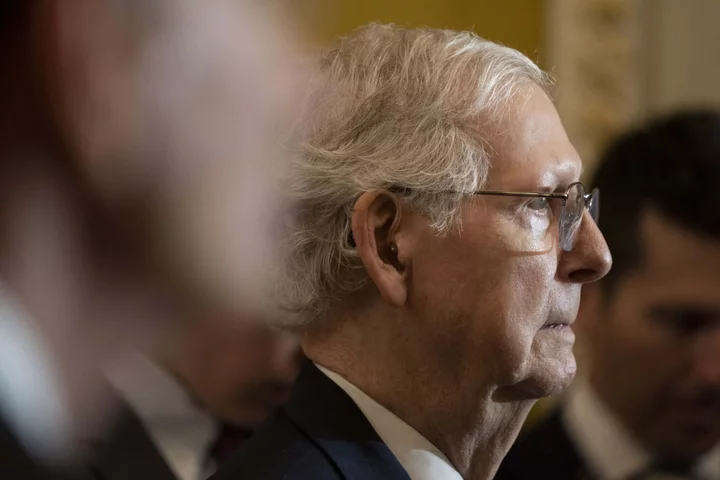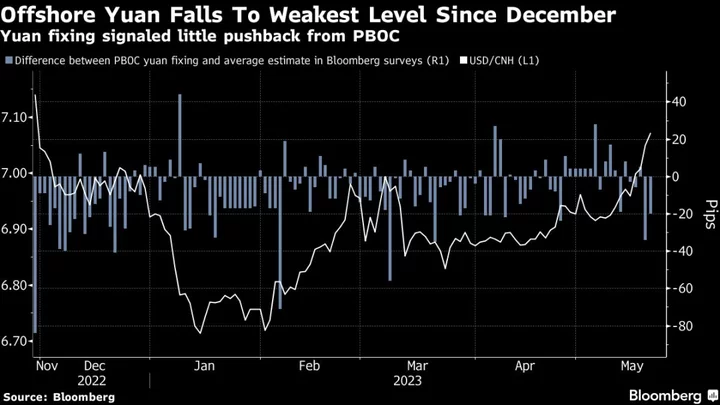Wall Street’s biggest banks passed the Federal Reserve’s annual stress test, a key hurdle for returning billions of dollars to investors.
The 23 largest US lenders showed they can withstand a severe global recession and turmoil in real estate markets, the Fed said Wednesday. The criteria for this year’s exam, which helps determine how much banks need to set aside as a cushion, was announced before March’s regional bank turmoil.
The annual exam is closely watched by the financial industry, where passing scores can give banking giants a green light to return billions of dollars to investors. But this year’s results may not quickly yield dividend and buyback announcements because many banks have warned they’ll hold off until they get clarity on new capital requirements that have been in the works for years. The Fed, which said banks can start announcing their payout plans on Friday, is also weighing an overhaul of its supervision efforts.
Still, the results bolster claims that the banking industry remains generally strong and well-capitalized. Top bank executives including JPMorgan Chase & Co. Chief Executive Officer Jamie Dimon have argued that increasing the amount of money that firms need to set aside will hurt lending.
This year’s hypothetical scenario involved the US unemployment rate surging to 10% while commercial real estate prices plunged 40% and the dollar jumped against most major currencies. In one wrinkle, for the first time, the eight biggest US banks including JPMorgan, Goldman Sachs Group Inc. and Morgan Stanley faced an “exploratory market shock” to their trading books involving greater inflationary pressures and rising interest rates.
One Measure
“This stress test is only one way to measure that strength,” Michael Barr, the Fed’s vice chair for supervision, said in a statement. “We should remain humble about how risks can arise and continue our work to ensure that banks are resilient to a range of economic scenarios, market shocks, and other stresses.”
The results of the new shock component won’t be used in capital requirements, but they will help regulators understand trading risks and prepare for potentially testing banks against multiple scenarios in coming years. The Fed said that the exercise showed “the largest banks’ trading books were resilient to the rising rate environment tested.” A rapid rise in borrowing costs was partially blamed for the demise of Silicon Valley Bank.
“Recognizing this year’s scenario was the most difficult on record, these outcomes are the best antidote to any lingering anxiety surrounding recent bank failures,” Lindsey Johnson, chief executive officer of the Consumer Bankers Association, said in a statement.
Shares from banks including JPMorgan, Wells Fargo & Co. and Goldman Sachs rose in late trading.
Meanwhile, Dennis Kelleher, who leads the Washington-based group Better Markets, which advocates for tougher financial rules, said changes to the exams are urgently needed. “This is dangerous, misleading, incomplete and results in false comfort,” he said in a statement, adding that the 2023 exams didn’t fully capture the scope of risk in the banking system.
Since taking over as the Fed’s top bank watchdog last year, Barr has said the central bank is considering changes that will assess more types of financial stress as part of a broad look at lenders’ capital requirements. He has said that the changes will seek to address issues raised by the recent bank failures.
Projecting Losses
The Fed also said the test’s focus on commercial real estate showed that while large banks would experience heavy losses in the hypothetical scenario, they would still be able to continue lending.
The Fed projected that the hypothetical calamities would cause banks to lose $541 billion, including $100 billion in losses from commercial real estate and residential mortgages. The losses are in line with those estimated in previous years.
In the scenario that assumed a 40% slump in commercial real estate prices, banks saw losses on loans tied to the sector hit $64.9 billion. The Fed said its supervisors have increased their efforts to understand banks’ credit risk exposure to the industry, which has been souring in a new era of remote work that’s lowered office occupancy levels nationwide.
“The test’s focus on commercial real estate shows that while large banks would experience heavy losses in the hypothetical scenario, they would still be able to continue lending,” the Fed said in a statement. “The large projected decline in commercial real estate prices, combined with the substantial increase in office vacancies, contributes to projected loss rates on office properties that are roughly triple the levels reached during the 2008 financial crisis.”
Although the Fed hasn’t released its proposal, Chairman Jerome Powell indicated this month that the biggest banks could face about a 20% increase in the amount of capital that they’re asked to set aside that under the new Basel III requirements. He added that the eight biggest US firms will likely bear the brunt.
At the same time, regulators are weighing a plan to make banks with at least $100 billion in assets, and not just the country’s largest lenders, adhere to the requirements. Those so-called midsize lenders weren’t featured in this year’s stress testing.
--With assistance from Hannah Levitt.
(Updates with comments, share reaction beginning in eighth paragraph)

